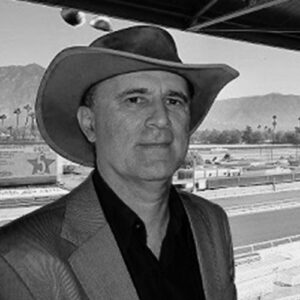
Structure is one of the most discussed and important words in fiction writing. There are many theories of what exactly structure is. Screenwriting texts and experts, for example, often declare that structure is the proper placement of plot points or the use of sequences and acts. These organizing principles are essential to a script, but they relate, I believe, not to structure but to form. Form is the external shape of a script, of how its content– its events and scenes–are molded. Form is not the content of a story. Actual structure, I believe, is the content. And content is always king. Writing a great script depends on structure.
To create a story, a writer must first construct its central conflict, that is, its basic character goals and conflicts and the key problem of the story. Then the writer develops this central conflict into a long series of logically connected events with a beginning, middle and end; that is, with a set-up, the conflict development, and a climax.
As a simple example, consider the original Die Hard film. Its premise or central conflict is this: a tough and resourceful New York City policeman flies to Los Angeles for Christmas to win back his estranged wife, but just as he meets her, she and her co-workers are kidnapped by terrorists and held hostage in their locked down skyscraper.
The policeman must evade the terrorists hunting him to rescue his wife and the other hostages, alone. The plot of Die Hard is the events that are developed from this central conflict. That is, all the murders, fights, escapes, counterattacks and relationships in the film, all the escalating complications, are applications or expansions of this central conflict. A central conflict is the plot seed that logically determines the nature of the plot tree.*
The plot itself, this series of logically connected complications, is the structure. Where you place an inciting incident, plot points, act breaks and how you use sequences, the external frame or shape of a story, is only the form of your script. To emphasize the point: the structure is your series of connected events logically grown from and determined by a central conflict. Think: form is the exterior shape of your story, structure is its interior content/events. (This analysis leaves out how a writer can (and should) also organize his plot using important dramatic techniques such as mystery and suspense lines, dramatic irony, surprise and deception.)
That is, a writer (generally) creates the main character conflicts and the logically developed and connected plot events before he solidifies these into sequences and acts. Consider the issue this way: what is more important to a good story; intriguing characters and exciting conflicts organized in a dramatic, logical series of events? Or ordinary characters and clichéd events perfectly organized into sequences and acts? Also ask yourself: do you want your draft to be perfectly shaped gold or mud? I firmly believe that it is best to create the major content/events first, and then worry about how to best shape these. (That is not to say that a writer can’t go back and forth between content and form but content must come first creatively.)
And please note that I am not saying that form is not important. It is. But today there is way too much discussion of how to properly shape a story (plot points, blah blah) and not enough on how to create original characters and dramatic plots. There are many current movies that are well “structured” (plot points in the perfect places!) but the content of these films is awful.
I believe that a writer should at first focus on these two very difficult fundamentals. Let me help you construct a central conflict so that it is a rich seed that you can develop into a great plot structure.
See Scott’s LinkedIn Profile
How to Make it as a Writer: Tips from A Pro
Playwrights and Screenwriters: How to Be New in Your Story


Scott McConnell is a Melbourne-based writer/story consultant who has worked as a documentary producer in Los Angeles, a freelance writer and interviewer and in fiction development. He loves nothing more than working on story. Scott started in the business as a story analyst in Los Angeles; analyzing scripts for Roger and Julie Corman, Samuel Goldwyn and the Sundance Institute, among others. He was later the showrunner (writer/producer/director) of the U.S. nationally syndicated Live Life and Win! and he co-wrote the reality series Hollywood Boot Camp. He has organized stories/shoots all over the world, managing producers, crew and talent, and produced at live events and on re-creation shows. He has found the story by studying footage, reading scripts/books, pre-interviewing talents, shooting BTS, and writing or editing the script. Scott can edit low budget features as well as big budget blockbusters. He loves to fix stories, supply solutions, especially regarding your idea/premise, which is where most films/scripts fail. He also finds that many good writers don't focus enough on theme. It is through theme that a writer moves and audience emotionally. Scott’s story analysis, film reviews and interviews have been published in the U.S., UK and Australia, He has been published in Creative Screenwriting, MovieMaker Magazine, Script, Soundtrack.net, Produced By, The Guardian, Inside Film and FilmInk. Now based in Melbourne, Scott especially focuses on script fixing for individual writers and production companies. Scott is a member of the Producer’s Guild of America. For credits and experience, see: http://www.imdb.com/name/nm3130957/ Contact: Scott McConnell, Melbourne, scottm100@gmail.com
Read Full Profile© 2021 TheatreArtLife. All rights reserved.

Thank you so much for reading, but you have now reached your free article limit for this month.
Our contributors are currently writing more articles for you to enjoy.
To keep reading, all you have to do is become a subscriber and then you can read unlimited articles anytime.
Your investment will help us continue to ignite connections across the globe in live entertainment and build this community for industry professionals.